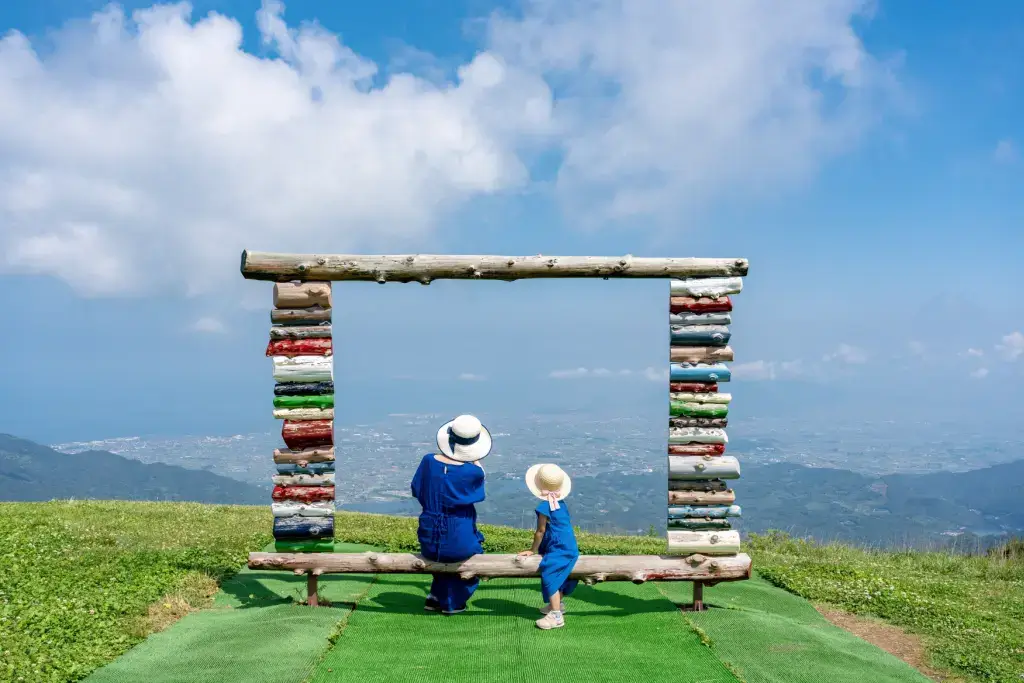Despite its small size, Kagawa Prefecture offers breathtaking natural beauty and a rich cultural heritage. It’s also a fantastic destination where tradition and modernity blend seamlessly, bringing numerous visitors an exclusive and memorable experience. Explore this delightful prefecture and discover the five must-visit tourist spots here!
Table of Contents
ToggleWhere is Kagawa Prefecture?
Kagawa Prefecture is situated in the northeastern part of Shikoku Island. It sits next to the Seto Inland Sea, with beautiful views and easy access to Honshu Island through the Seto Ohashi Bridge. The capital city is Takamatsu, known for its many historical sites.
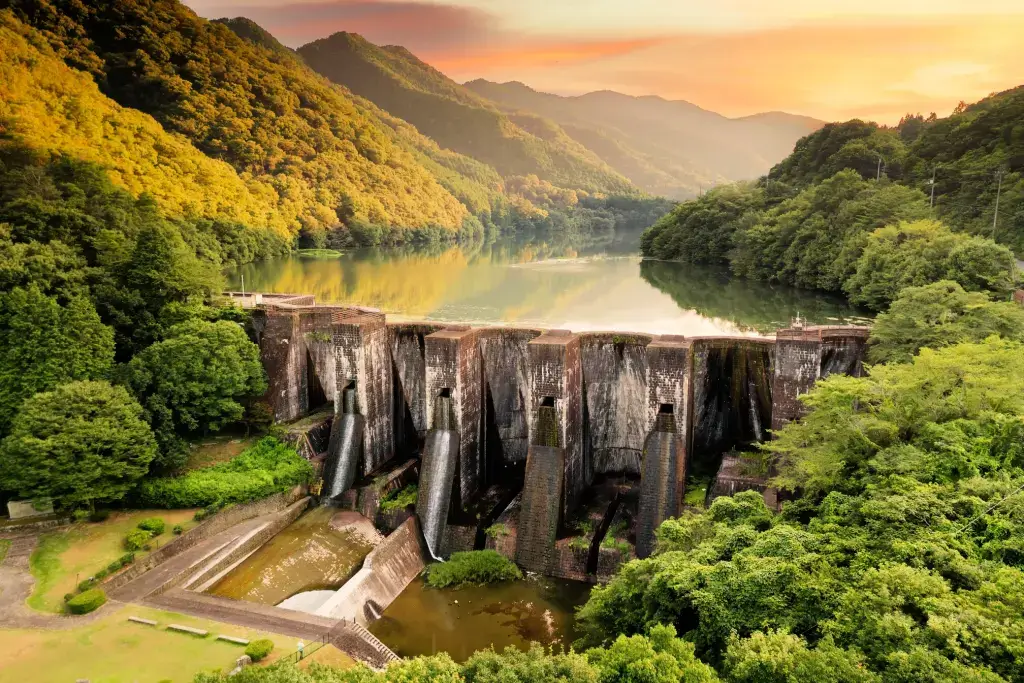
Historically, Kagawa was called Sanuki Province. The prefecture also has a rich history, including the Battle of Yashima, a significant event during the Genpei War (1180 – 1185). The battle took place on Yashima, a mountain near Takamatsu, and is seen as an important step that led to the rise of the Kamakura shogunate.
Kagawa’s mix of mountains and scenic coastlines offers plenty of chances for outdoor activities. The prefecture’s warm climate is perfect for growing rice, barley, and mandarins. Another specialty is the delicious sanuki udon noodles, which are loved all over Japan.
Kankakei Gorge
Kankakei Gorge is a natural treasure located on Shodoshima Island. This gorge formed over 13 million years ago due to volcanic activity. Over time, erosion shaped the landscape and created the unique rock formations seen today. Nowadays, it’s one of Japan’s three most stunning gorges and is a must-visit spot in the Setonaikai National Park.
Visitors can explore Kankakei Gorge in various ways. The Kankakei Ropeway provides a breathtaking ride from the base of the gorge up to the summit. Along the way, you’ll see sweeping views of cherry blossoms in spring. In summer, vibrant green landscapes await you. Autumn brings colorful leaves, while winter showcases snow-covered peaks.
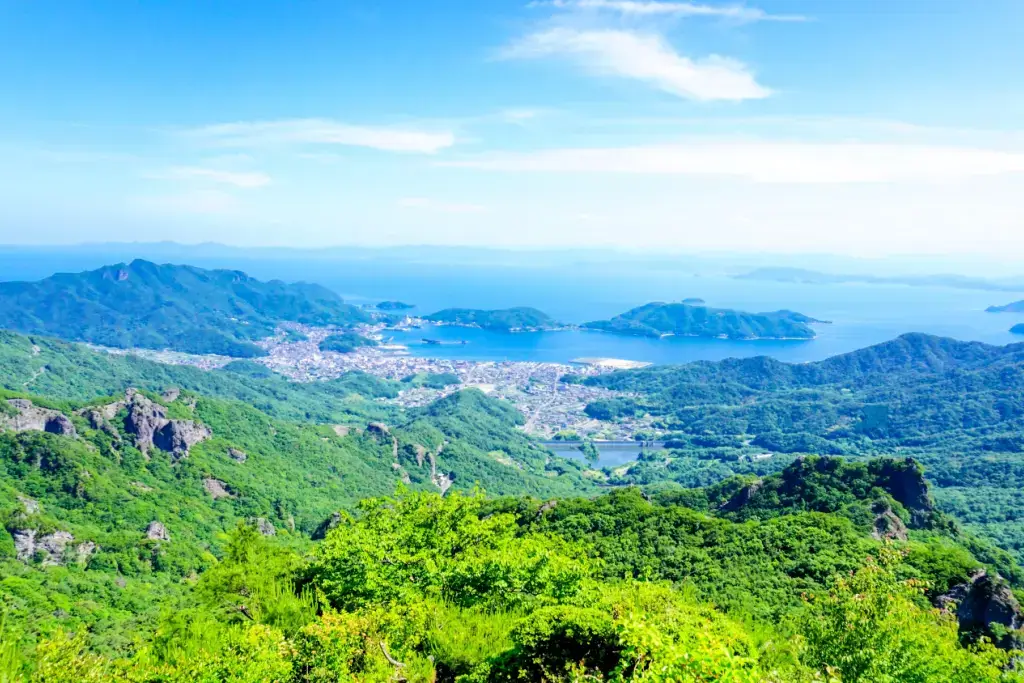
At the summit, you can enjoy a meal at the local diner. They serve specialties like olive beef croquette burgers. There’s also a souvenir shop where you can buy local products. You’ll find Shodoshima’s famous shoyu (soy sauce) and olive oil. Don’t forget to try the special momiji (maple) cider!
The trails are visible and suitable for beginners, making them an interesting way to explore the area. For those who prefer to be more active, hiking trails wind through the gorge, providing close-up views of the rugged landscape and the chance to spot some local wildlife.
Are you looking for great snacks from across Japan? Check out Sakuraco! Sakuraco delivers traditional Japanese snacks, teas, and sweets from local Japanese makers directly to your door so you can enjoy the latest treats directly from Japan!
Shikokumura Village
Shikokumura Village, or Shikoku Mura, is a fantastic open-air museum at the base of Mt. Yashima in Takamatsu. The village takes you back to the past with its ancient houses and historical buildings, which date from the Edo period (1603 – 1868) to the Taishō period (1912 – 1926). All the buildings, including farmhouses, workshops, and a kabuki theater, were moved here from various parts of Shikoku Island and restored to their original glory.
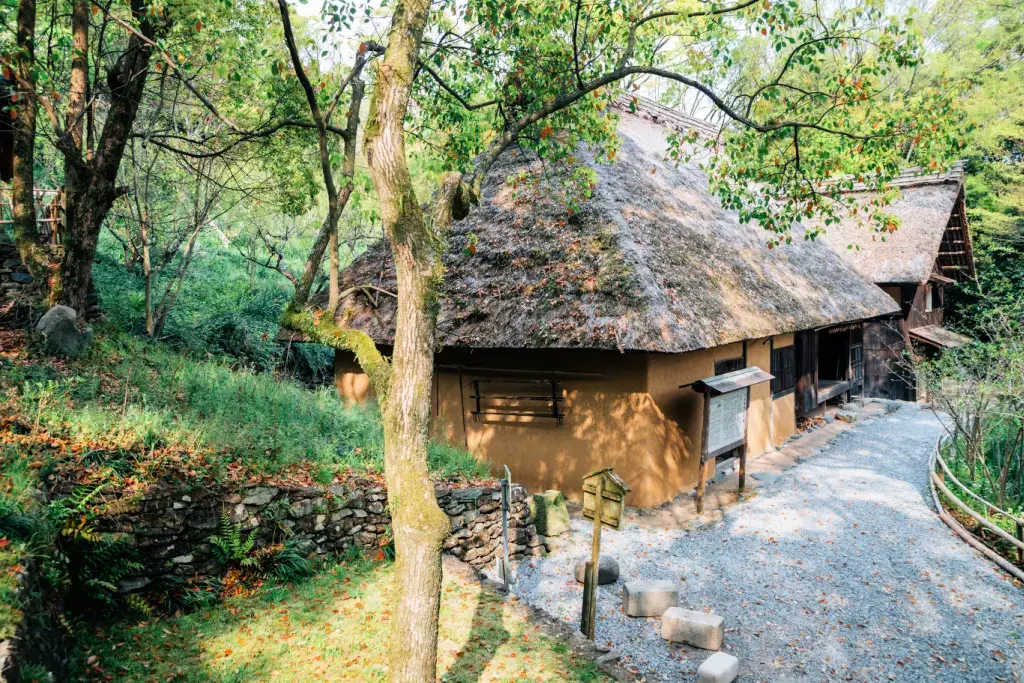
One highlight is the soy sauce production facility, where you can learn about traditional methods of making this essential Japanese ingredient. Renowned architect Tadao Ando designs a lovely art gallery showcasing modern artworks and sculptures. In addition, the village park features a lighthouse and a unique vine suspension bridge. For more fun, you can visit the agricultural kabuki theater, where local people perform traditional kabuki plays.
Kikugetsu-tei
This is the largest and most well-known teahouse in Ritsurin Garden, a striking landscape garden in Takamatsu. It has a rich history, passed down through generations of feudal lords since the early Edo period. Kikugetsu-tei means “Moon Scooping Pavilion,” inspired by a Chinese poem about holding the moon when scooping water.
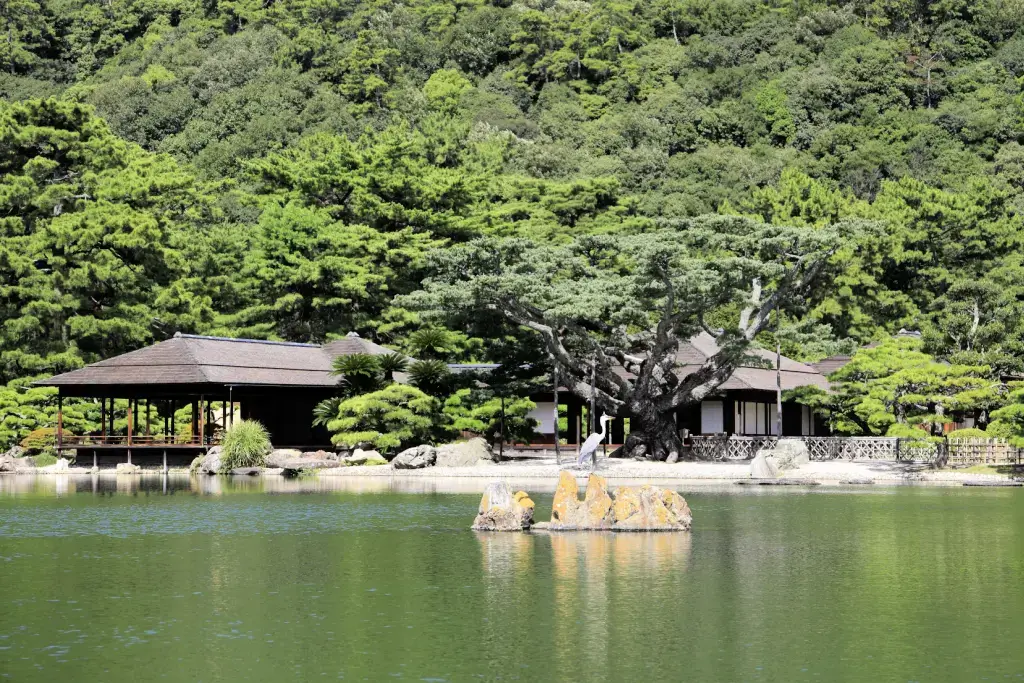
The design showcases the traditional sukiya-zukuri style, known for its simplicity and elegance. The open sides invite nature inside and reveal breathtaking views of the surrounding garden. This poetic imagery fits well with the teahouse’s architecture, which makes you feel connected to the lake and garden. Kikugetsu-tei is not just a place for tea; it also serves as a venue for classic photo shoots, such as weddings. It’s a favorite spot for celebrating special moments!
Takamatsu’s Red Lighthouse
Takamatsu’s Red Lighthouse, known as Setoshirube, is a charming landmark at the end of a long breakwater stretching from Takamatsu Port into the sea. This red lighthouse is distinctive as it is the world’s first made almost entirely glass. Established in 1998 as part of the Sunport project, it stands 46 feet tall and shines brightly at night with a stunning red light.
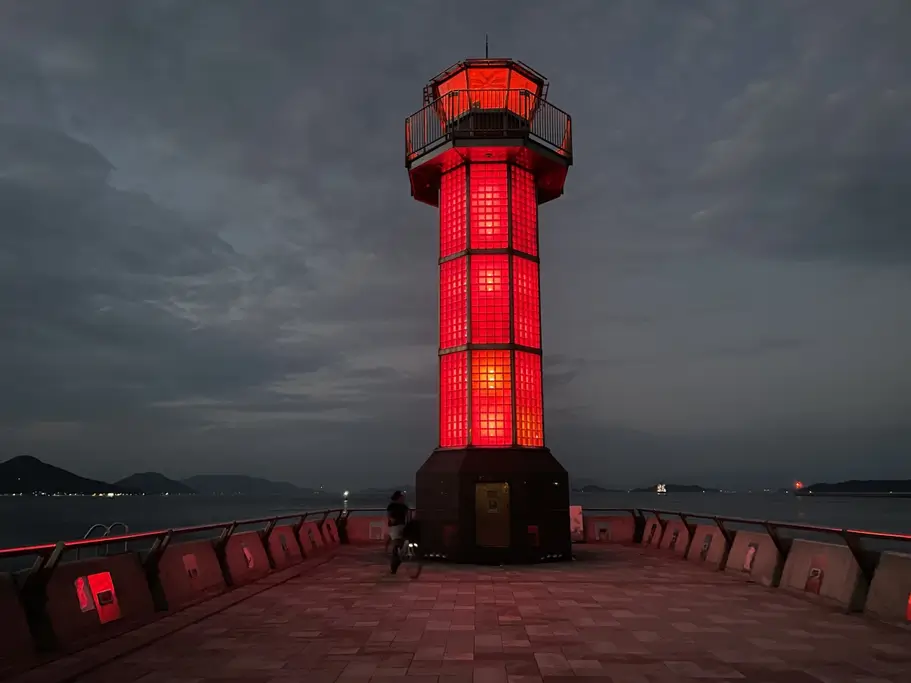
Its glass design makes it glow beautifully in the dark, reflecting off the water and creating a picturesque scene. This spot is perfect for a peaceful stroll, where you can enjoy the serene views of the sea and the glowing lighthouse without many distractions.
Naoshima Bath
Naoshima Bath, also called “I Love Yu”, is a special place in the small town of Miyanoura where art and bathing come together. Artist Shinro Ohtake created this bathhouse. Opened in 2008, it has become a cherished spot for locals and visitors. The whole place makes you feel relaxed and surrounded by creativity. Naoshima Bath welcomes everyone, including those with tattoos, which is a lovely touch.
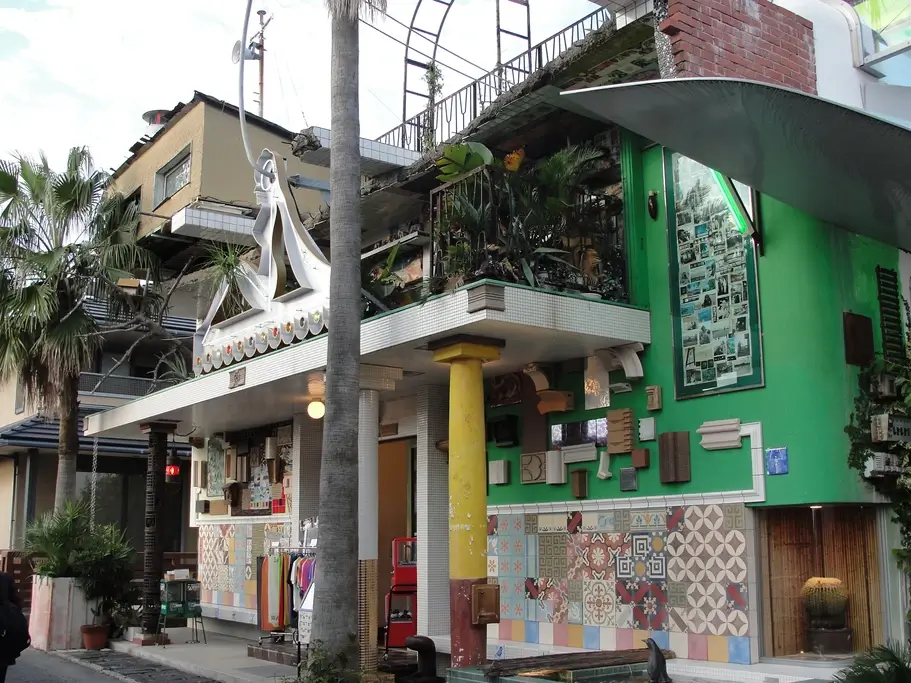
The building itself is a vibrant blend of colors and materials. The outside of Naoshima Bath is covered in colorful tiles, vibrant mosaics, and unique sculptures, making it look like a colorful art piece. You’ll find more artwork, including painted ceilings, big mosaic tiles, and many quirky decorations. The bath area features a large, shallow tub surrounded by fun art, like a giant elephant statue and cool murals.
What makes Kagawa Prefecture so special?
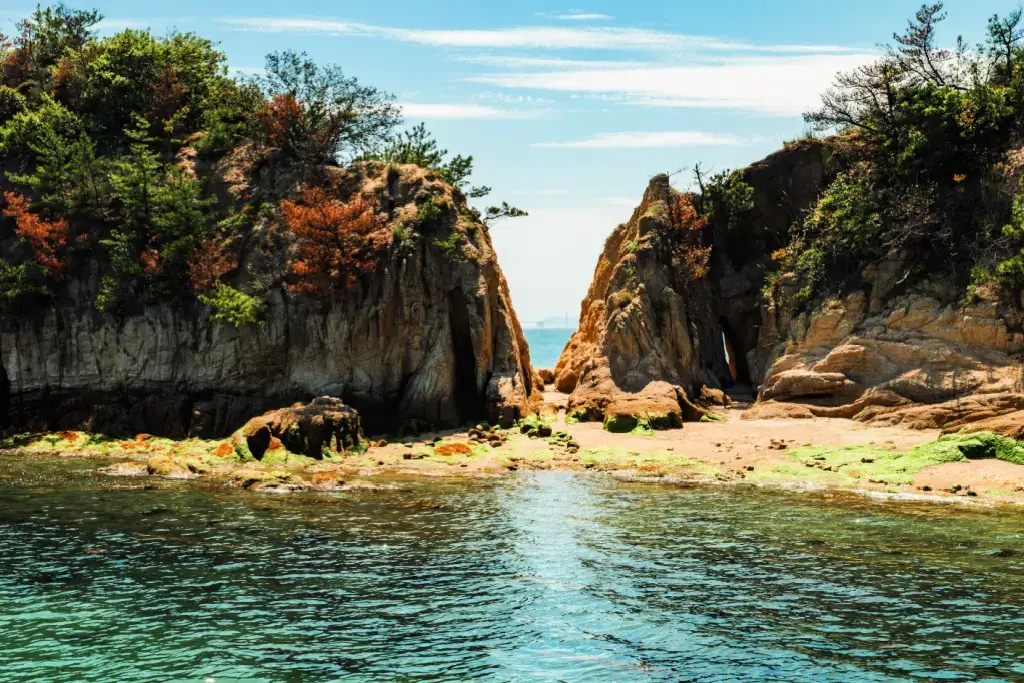
Kagawa Prefecture stands out thanks to its unique combination of captivating landscapes, deep historical roots, and cultural richness. Nature lovers can marvel at the breathtaking views of Kankakei Gorge. Meanwhile, history enthusiasts can explore the well-preserved buildings of Shikokumura Village. The prefecture’s culinary scene, highlighted by the famous sanuki udon, is a treat for food lovers. Art and creativity are celebrated here, too, with places like Naoshima Bath blending traditional bathhouse culture with modern art. Have you ever visited Kagawa? Share your experience with us!

